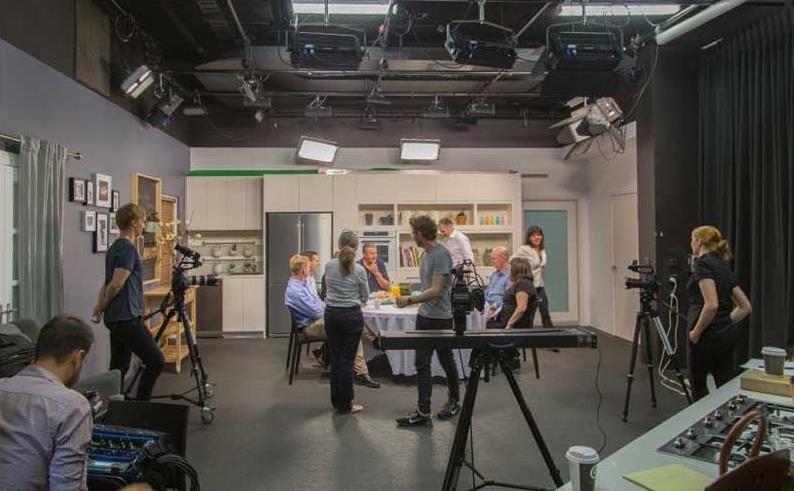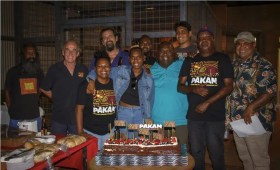Television drama and documentary may be the high status end of production but most viewing hours are spent on factual, sport, games, chat, food, housing, travel… and so on. Lifestyle and light entertainment, catchy and broad brush, neatly episodic for the advertising.
In theory this market could be doing better than production under COVID-19 and offering lifelines to stalled production companies, all based on the international sales and distribution market.
Screenhub spoke to Fiona Gilroy, the Content Sales & Acquisitions Director for Flame Media and Roger Vanderspikken, the Chief Operating Officer for Fred Media.
The market
The story of course is much more ambiguous. Both of these companies do most of their business in this six months of the year. Gilroy is unsure whether any general increase in business is caused by COVID.
‘However,’ she says, ‘Some territories are definitely out there looking for completed content. I would say these territories are Western Europe, China and North America.
‘Asia and Eastern Europe are very quiet. I think they’ve found the Coronavirus situation very tough to navigate.’
Vanderspikken is having a similar experience. ‘In terms of catalog sales, it actually depends on the territory. So for example, in Europe, the Nordics, Scandinavia, often, you know, business. There’s places like Southern Europe, in Spain, very hard.’
Vanderspikken is also pushing original content out from WTFN, so COVID-19 has stopped production, leaving some shows unfinished and upcoming deals which may have pushed out to October. He is plugging some gaps with archival-based shows.
In the immediate future, the market has already taken delivery of its 2020 schedule, so the gaps won’t show up for another three or four months. Then it could be very difficult.
Vanderspikken claims his company is pretty well organised, but he is finding that clients are confused or slow to respond. Working from home has slowed decision making systems inside companies, while the future is very uncertain.
Both companies are working with a stable client base, so they slot easily into their needs, and know the decision makers who trust them to deliver.
But Gilroy is very aware of the key problem. ‘I think there are some channels and platforms that are very heavily reliant on advertising funding for their revenue, who are also finding it very tough. So while the audience is engaged incredibly on AVOD platforms and so on, the revenue isn’t being generated, because there aren’t very many advertisers around.’
There are stories of large companies cancelling their advertising for the next 12 months. Here we know that Network Seven and Foxtel are doing it tough.
Advertising revenue
Vanderspikken is trying to be nimble. ‘All the advertising collapses, so free-to-air networks are generally losing that money, but they have to fill the gaps because there is no live sports, there are no morning shows anymore. We can move quickly, we do deals quickly, we deliver quickly and that adds some clients.’
He is also looking to deal with Netflix which is dealing with delayed shows or simply production which is now taking much longer.
We are hearing suggestions that the market has learnt to accept much lower quality, which could change the kind of product which is needed.
‘You can almost divide the market into three categories. The professional, the professional amateurs and the real amateurs. Lots of people watch YouTube and lots of people make a lot of money there. But the quality’s barely amateur, for sure.’
While the advertising market has built all three categories into their strategies, blue chip is still central.
Fiona Gilroy agrees. ‘It’s a very fluid and strange time. And the people who are really actively looking for content at the moment are not buying anything different to what they used to buy before.
‘I haven’t heard any talk from the buyers of content that people’s tastes have changed.’
Any attempts to use bad archive or user generated content or skinned compendium shows have died away quickly.
‘I guess their audience have told them that they’re over this. Audiences just want to watch more more of what they like watching, and it’s a struggle is for the buyers to source,’ she said.
‘Definitely people are looking for more engaged and more upbeat stories, they are not wanting serious deep recession or Holocaust stories or anything. That is a slight change but its pretty marginal around the edges really.’
Gilroy is really happy with premium, while Vanderspikken does see the low-cost niche market growing. While he is marketing hard at the moment, both of them have solid relationships with major clients and shape their material towards them. They will both bring more challenging shows to the market, but they push towards the same sweet spots with familiar partners.
The future of markets?
What about the loss of the major markets? ‘I don’t think Australians will travel any time soon,’ says Vanderspikken, ‘and for those big markets, people are getting used to online meetings. It’s a big saving not having to attend.’
He finds that the materials that Fred has to request or order are just the same, and the work to set up meetings and pitches is pretty well identical. It’s a lot easier to spread them out.
However, the markets like MIPCOM and MIPTV do provide the underlying rhythm to sales. Everyone gears their completion and marketing preparations to their dates, buyers know when they can schedule, and can set sellers up in competition with each other.
It is not surprising that both Flame and Fred maintain offices around the world.
As Gilroy observes, ‘Whoever owns those companies like Zoom and everything will be doing huge business. All our salespeople, and other sales people that I’ve spoken to, are more in touch with their clients than they ever have been because they’re Zooming and calling and catching up with people all the time.
‘When people are working from home to reach the market, the distractions are just less and you’ve got a bit more time to to be actually speaking to people.
Gilroy has been recently been on some international pitching panels using Zoom. Besides the main group environment, participants can flick off for one on ones without leaving. ‘It is very clever technology, yes.
‘I spend five months a year away from home because we’ve got offices around the world that I spend time in. And you know, I feel healthier and personally much happier.’





